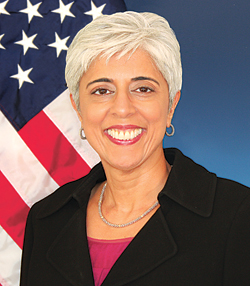INDIAN ARMED FORCES CHIEFS ON OUR RELENTLESS AND FOCUSED PUBLISHING EFFORTS

The insightful articles, inspiring narrations and analytical perspectives presented by the Editorial Team, establish an alluring connect with the reader. My compliments and best wishes to SP Guide Publications.

"Over the past 60 years, the growth of SP Guide Publications has mirrored the rising stature of Indian Navy. Its well-researched and informative magazines on Defence and Aerospace sector have served to shape an educated opinion of our military personnel, policy makers and the public alike. I wish SP's Publication team continued success, fair winds and following seas in all future endeavour!"

Since, its inception in 1964, SP Guide Publications has consistently demonstrated commitment to high-quality journalism in the aerospace and defence sectors, earning a well-deserved reputation as Asia's largest media house in this domain. I wish SP Guide Publications continued success in its pursuit of excellence.
- Indian Air Force Aims for Full Indigenous Inventory by 2047 — Air Chief Marshal A.P. Singh
- General Upendra Dwivedi takes over as the Chief of the Army Staff
- Rajnath Singh assumes charge as Defence Minister for the second consecutive term
- Admiral Dinesh K. Tripathi assumes Command of the Indian Navy as 26th Chief of the Naval Staff
- Prime Minister witnesses 'Bharat Shakti' – a Tri-Services Firing and Manoeuvre Exercise in Pokhran, Rajasthan
'DARPA sows seeds of technological surprise,' Director Arati Prabhakar

Many of the advances that contribute to national security resulted from early investment in developing new technologies, the Director of the Defense Advanced Research Projects Agency (DARPA) told Congress yesterday.
Dr Arati Prabhakar represented the Defense Department at a Senate Appropriations Committee hearing called to address concern that the national investment in research and development had shrunk since 2001, along with the education pipeline for young scientists and engineers.
The directors of the Office of Science and Technology Policy of the Executive Office of the President, the National Science Foundation, the National Institutes of Health and the Energy Department also testified at the hearing.
“DARPA is part of Defense Department science and technology investments,” Prabhakar said. “We’re also part of this much larger national ecosystem for R&D. But within those communities, we have one very specific role: to make the pivotal early investments that change what’s possible so we can take big steps forward in our national security capabilities.”
DARPA’s output is technology, but the organisation counts its mission complete only when the technologies change outcomes, she added.
“Every time a stealth fighter evades an air defence system, every time a soldier on the ground is able to place himself precisely with GPS and get the data he needs, every time a radar on an aircraft carrier allows us to see a threat to a carrier strike group before it sees us – that’s when we count our mission complete,” Prabhakar said.
In every case, DARPA made a pivotal early investment that showed the technologies were possible, and what followed from that, Prabhakar said, was equally important.
“That was the investment, often by our partners in other parts of the Defense Department and the military services – their science and technology investments, their development investments or their acquisition programs,” the director said. “Of course,” she added, “many in industry were involved deeply in those efforts, and ultimately to make those technologies into real capabilities for our warfighters.”
Along the way, as DARPA focused on its mission of investments for national security, the organisation’s scientists and engineers planted some of the seeds that formed the technology base that the U.S. commercial sector has built layer on layer above the foundation, Prabhakar said.
“Every time you pick up your cell phone and do something as mundane and miraculous as check a social networking site, you’re living on top of a set of technologies that trace back to that early work we did,” she added. “Public investment laid that foundation. Billions of dollars of private investment and enormous entrepreneurship is what built those industries and ended up changing how we live and work with these technologies.”
DARPA’s mission of creating breakthrough technologies for national security is unchanged across more than five decades, she told the panel, but the world in which DARPA invests and pursues its mission continues to change, and so do the things DARPA does that reflect the national security and technology context in which the organisation must operate today.
“In one arena, we see information at massive scale affecting every aspect of national security,” the Director said. “So if you look in our portfolio today, you will find game-changing investments in cyber and in big-data programmes.” One example is work DARPA is doing to tackle the networks that drive human trafficking around the world, she added.
In another arena, Prabhakar said, DARPA is looking at what’s happening with the cost and complexity of military systems today.
“We recognise that [such systems] are becoming too costly and too inflexible to be effective for the next generation of threats we will face around the world,” Prabhakar explained, “so at DARPA we are investing in programmes that are fundamentally rethinking complex military systems.”
DARPA is investing in technology its experts believe will lead to powerful new approaches for radar, communications, weapons and navigation, she said.
“And in a range of research areas, we can see the new seeds of technological surprise,” Prabhakar said. “One example is where biology is intersecting with engineering today, and in areas like that, we are making investments that will lead to new technologies like synthetic biology and neurotechnology.”





